Marina: la Chiesa e il territorio
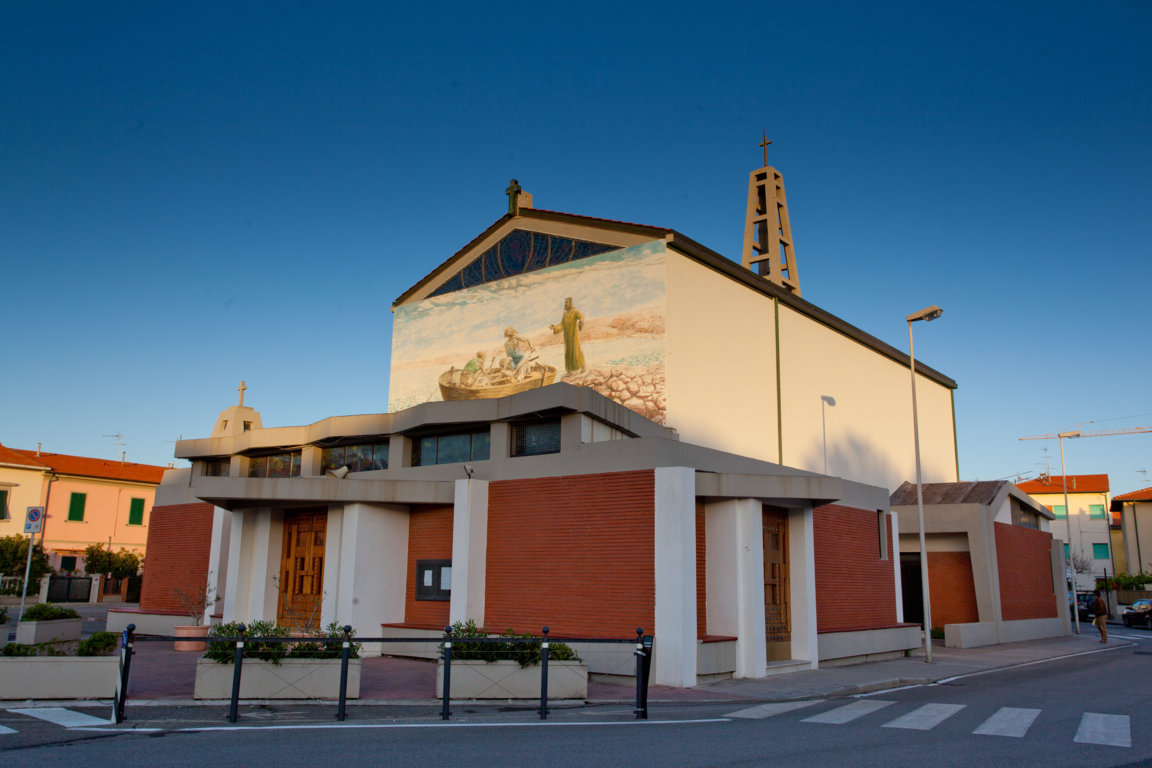
Informazioni sul territorio e sulla Chiesa di Cecina Marina
ll territorio nel quale ci troviamo ha una lunga storia: troviamo qui insediamenti umani fin dal X secolo a. C., quando la Toscana assunse un ruolo importante nel mondo antico. La presenza di siti funerari etruschi nella zona denota la presenza di nuclei abitati lungo la strada che da Populonia si inoltrava verso Volterra. È il periodo nel quale l’economia della zona si basava soprattutto sullo sfruttamento delle miniere di rame. Nel corso del I secolo a. C. si diffuse in Toscana la civiltà romana, basata prevalentemente sull’economia agricola. Il sito più importante finora scoperto è la villa romana dell’età imperiale nella zona di San Vincenzino, sull’attuale Via Ginori.
Nell’età tardo imperiale, la diffusione dei grossi latifondi portò all’abbandono e all’impaludamento dell’intera area costiera. Fu questo il periodo più oscuro per la zona della foce del Cecina: con le paludi si diffuse la malaria che rese impossibili insediamenti stabili. Anche le strade di collegamento fra sud e nord non erano più quelle sulla costa, ma nell’interno sul percorso collinare. Fu importante in questo periodo, siamo in epoca medievale, la presenza dell’Ordine Benedettino, con monasteri nel territorio di Bibbona, Casale M.mo, Montescudaio e Monteverdi. Con il granducato di Toscana i territori della pianura di Cecina furono amministrati dalle comunità di Riparbella e Bibbona. Nel 1590 il granduca Ferdinando I fece costruire un palazzo, il “Fitto”, sulla riva sinistra del fiume. A lui ed a Cosimo I si devono le prime opere di bonifica che permisero insediamenti legati all’artigianato intorno al fiume, all’attività metallurgica, all’allevamento del bestiame della tenuta granducale e alla coltivazione dei cereali. Nel 1737 inizia la dominazione degli Asburgo-Lorena: l’anno successivo la tenuta di Cecina coi territori circostanti furono ceduti al senatore Carlo Ginori (1702-1757), che proseguì nell’opera di bonifica e stabilì in prossimità della foce del fiume una piccola colonia per la pesca del corallo.
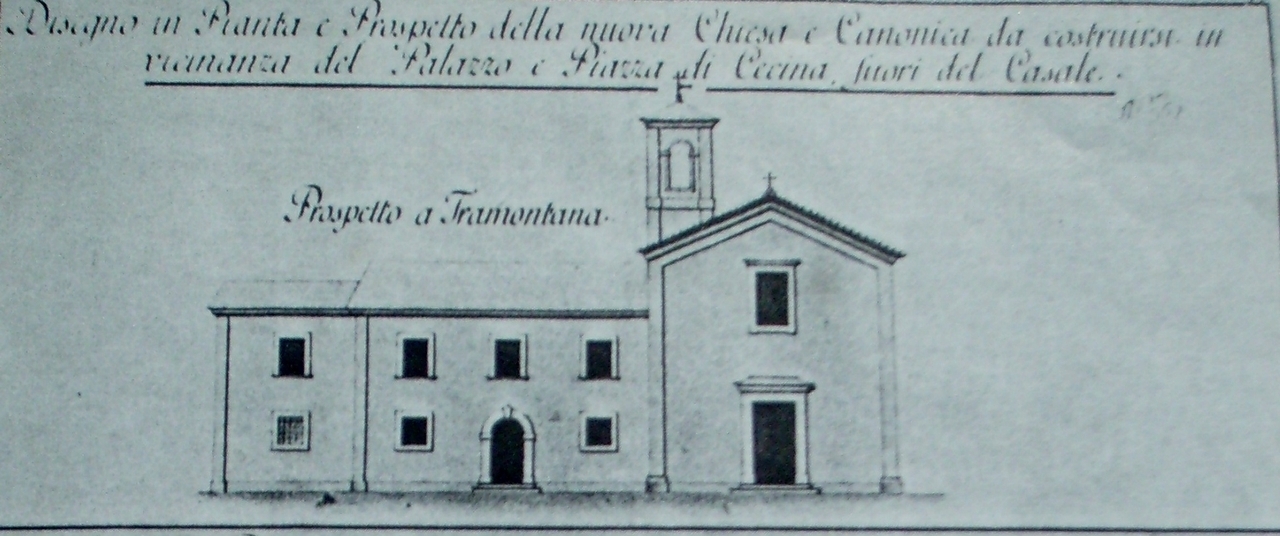 Tra il 1765 ed il 1790 il granducato di Toscana fu retto da Pietro Leopoldo che attuò una politica di intervento sul territorio, con particolare interesse per l’area costiera. Nel 1771, preso atto della crescita della popolazione intorno alla foce del Cecina, il Vescovo di Volterra Alessandro Galletti, eresse la Parrocchia di Cecina Mare con il titolo di San Giuseppe, smembrandone il territorio da quella di Bibbona. Nel 1785 si procedette alla costruzione della chiesa, su disegno dell’Ing. Caluri: la costruzione era a pianta rettangolare, le facciate esterne lineari e lisce, interrotte da motivi neoclassici. Vi erano poi il campanile (non più esistente a pianta quadrata) e la casa canonica costruita nel 1787, più o meno secondo la struttura che possiamo vedere anche oggi. Il Vescovo di Volterra Luigi Bonamici delegò il Parroco, don Vincenzo Noccioli, alla benedizione della Chiesa, il 19 marzo 1789.
Tra il 1765 ed il 1790 il granducato di Toscana fu retto da Pietro Leopoldo che attuò una politica di intervento sul territorio, con particolare interesse per l’area costiera. Nel 1771, preso atto della crescita della popolazione intorno alla foce del Cecina, il Vescovo di Volterra Alessandro Galletti, eresse la Parrocchia di Cecina Mare con il titolo di San Giuseppe, smembrandone il territorio da quella di Bibbona. Nel 1785 si procedette alla costruzione della chiesa, su disegno dell’Ing. Caluri: la costruzione era a pianta rettangolare, le facciate esterne lineari e lisce, interrotte da motivi neoclassici. Vi erano poi il campanile (non più esistente a pianta quadrata) e la casa canonica costruita nel 1787, più o meno secondo la struttura che possiamo vedere anche oggi. Il Vescovo di Volterra Luigi Bonamici delegò il Parroco, don Vincenzo Noccioli, alla benedizione della Chiesa, il 19 marzo 1789.
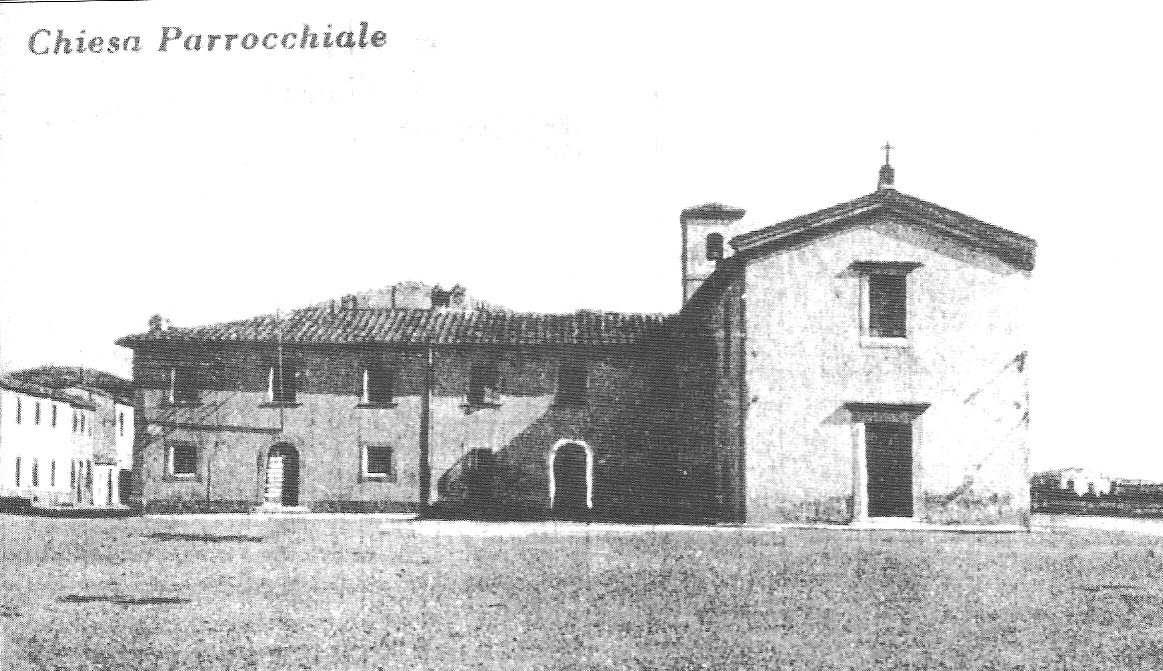
In quegli anni la Chiesa fu dotata di alcune tele. Come avveniva nel passato un’opera d’arte segnava sempre un’epoca, un momento storico, un luogo. Anche le tre tele della chiesa di Cecina Mare ci parlano del periodo e del luogo in cui sono state eseguite. I primi due sacerdoti, parroco e cappellano, ai quali fu affidata la cura della chiesa erano dell’Ordine dei Frati Minimi, fondato da San Francesco di Paola (1416-1507), l’eremita devoto a San Francesco d’Assisi che ebbe nel suo tempo fama di grande guaritore in tutta Europa. Per questa presenza dei Frati Minimi a Marina, le tele della Chiesa riproducono i Santi cari all’Ordine: in una vediamo l’Immacolata Concezione con il Bambino e S. Francesco di Paola; nell’altra S. Giuseppe (patrono della parrocchia) e S. Pasquale Baylon (1540-1592, anche lui dell’Ordine dei Frati Minimi) con un riquadro per l’immagine di Maria SS.ma; infine altra tela con la Vergine Maria con San Domenico ed i Santi della famiglia francescana: Francesco, Chiara e Antonio di Padova.
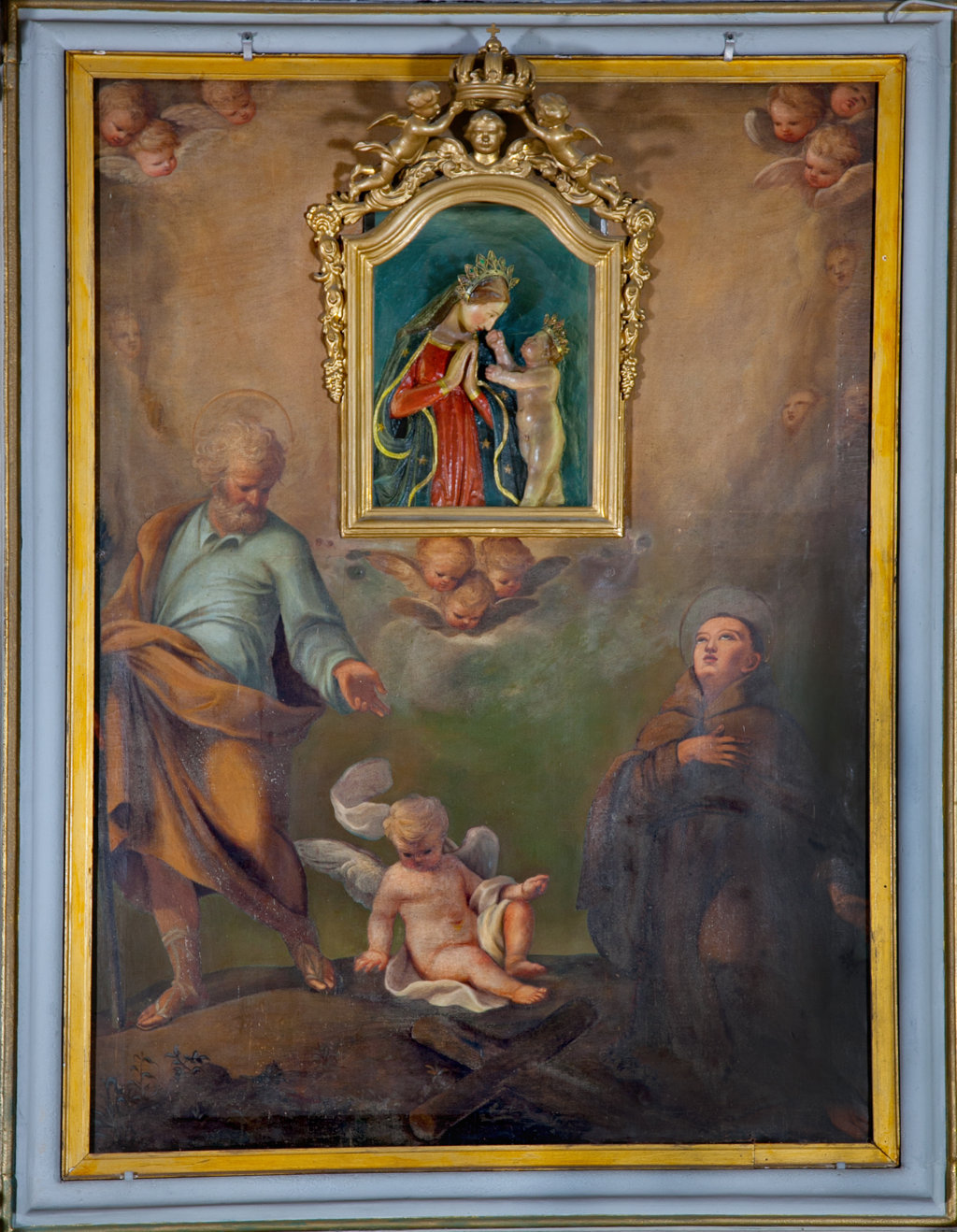 Di particolare interesse e devozione per la popolazione è l’immagine della “Madonna delle grazie”, un bassorilievo in gesso verniciato di autore ignoto, forse del XVI secolo. Intorno a questa “Madonnina”, come è chiamata dai marinesi, vi sono varie tradizioni popolari. La prima racconta che il fosso della Madonna (che sbocca più a sud in località “La California”) si sarebbe chiamato così perché nei pressi alcuni pescatori avrebbero pescata questa Madonnina. Una variante racconta invece del ritrovamento dopo una furiosa libecciata. Questa versione popolare risulta piuttosto improbabile per la difficoltà che un’opera in gesso potesse rimanere integra in acqua.
Di particolare interesse e devozione per la popolazione è l’immagine della “Madonna delle grazie”, un bassorilievo in gesso verniciato di autore ignoto, forse del XVI secolo. Intorno a questa “Madonnina”, come è chiamata dai marinesi, vi sono varie tradizioni popolari. La prima racconta che il fosso della Madonna (che sbocca più a sud in località “La California”) si sarebbe chiamato così perché nei pressi alcuni pescatori avrebbero pescata questa Madonnina. Una variante racconta invece del ritrovamento dopo una furiosa libecciata. Questa versione popolare risulta piuttosto improbabile per la difficoltà che un’opera in gesso potesse rimanere integra in acqua.
Un altro racconto attribuisce il rinvenimento dell’immagine al naufragio di una imbarcazione carica di vari oggetti sacri che, a causa della tempesta, si arenò di fronte a Marina di Cecina. Sulla spiaggia finì una cassa integra con dentro l’immagine della Madonna che fu consegnata al prete. Tra i ritrovamenti del naufragio si annovera, secondo i racconti popolari, anche una campana piccola, simile a quella che si trova sulle imbarcazioni, che in epoca moderna è stata donata dalla famiglia Chiavacci alla parrocchia e collocata sul campanile. I racconti popolari sono segno di devozione e trasmettono spesso una parte della verità. Del resto, nella storia, i naufragi nella zona antistante Marina non sono stati infrequenti. È del 1878 il naufragio del transatlantico “Australia” arenatosi sulle secche di Vada, anch’esso carico, tra l’altro, di oggetti di culto.
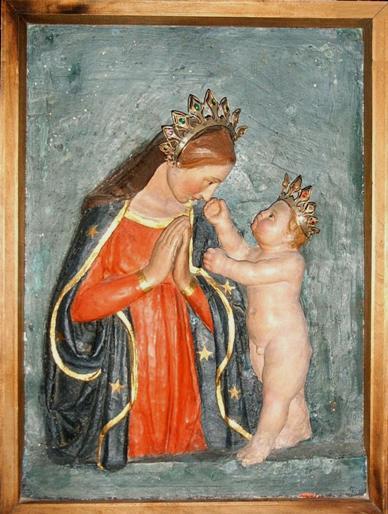
L’immagine rappresenta una maternità in adorazione: è la Madre che adora il Figlio di Dio. La dolcezza dello sguardo della Vergine e la manina del Figlio che si avvicina alla Madre per accarezzarla rendono il quadro degno di ammirazione ed invitano alla preghiera. La Vergine è vestita di rosso, come in molte antiche raffigurazioni: il rosso è il simbolo della divinità ed allude al titolo mariano di Madre di Dio. Sul manto azzurro (che si è diffuso come il colore mariano per eccellenza) vi sono le stelle. Maria è invocata come “Stella del mattino” . In quella che forse è la più antica raffigurazione di Maria, nelle catacombe di Priscilla a Roma (II secolo), insieme alla Madre appare un profeta che indica una stella, allusione all’oracolo di Balaam del Libro dei Numeri: una stella spunta da Giacobbe e uno scettro da Israele (Nm 24,17). La Tradizione che, in molti scrittori ecclesiastici, indica in Maria la stella, può essere riassunta nella parole di Giovanni Paolo II: Maria sarà per i cristiani del III Millennio la Stella che ne guida con sicurezza i passi verso il Signore. In questa zona costiera della Chiesa volterrana è poi particolarmente suggestivo invocare Maria come “Stella del Mare”, come fa nella sua bella preghiera San Bernardo: Nei pericoli, nelle difficoltà, nei dubbi, pensa a Maria, invoca Maria! Nel corso degli anni i Marinesi le hanno dato nomi diversi, tutti motivati: Madonna delle Grazie, Madonna dell’Acqua, Madonnina del Mare.
Nel 1855, con lo sviluppo del nuovo nucleo urbano lungo la via Aurelia (l’attuale centro di Cecina), fu costruita la nuova grande chiesa (oggi Duomo) e la chiesetta di Marina divenne semplice “cappellania”: il titolo di San Giuseppe fu trasferito alla nuova chiesa. Dopo la II guerra mondiale tuttavia, con l’avvento del turismo, la fascia costiera ebbe un ulteriore sviluppo e, nel 1955, la chiesa di Marina fu nuovamente eretta in parrocchia e dedicata a S. Andrea Apostolo.
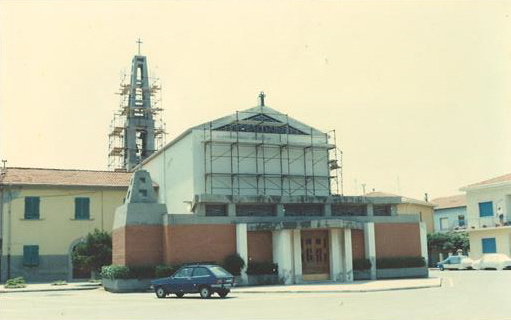
Ben presto si rese necessario un ampliamento della chiesa che fu prolungata sia nel lato del presbiterio che nella facciata (il prolungamento sulla piazza è abbastanza visibile perché di diverso livello rispetto al tetto della chiesa vecchia) e mutò nella sua struttura interna per la riforma liturgica: i lavori furono eseguiti nel 1971. Anche la torre campanaria fu trasformata: la trabeazione che sostiene le campane è ancorata sopra la vecchia struttura del campanile del 1775.
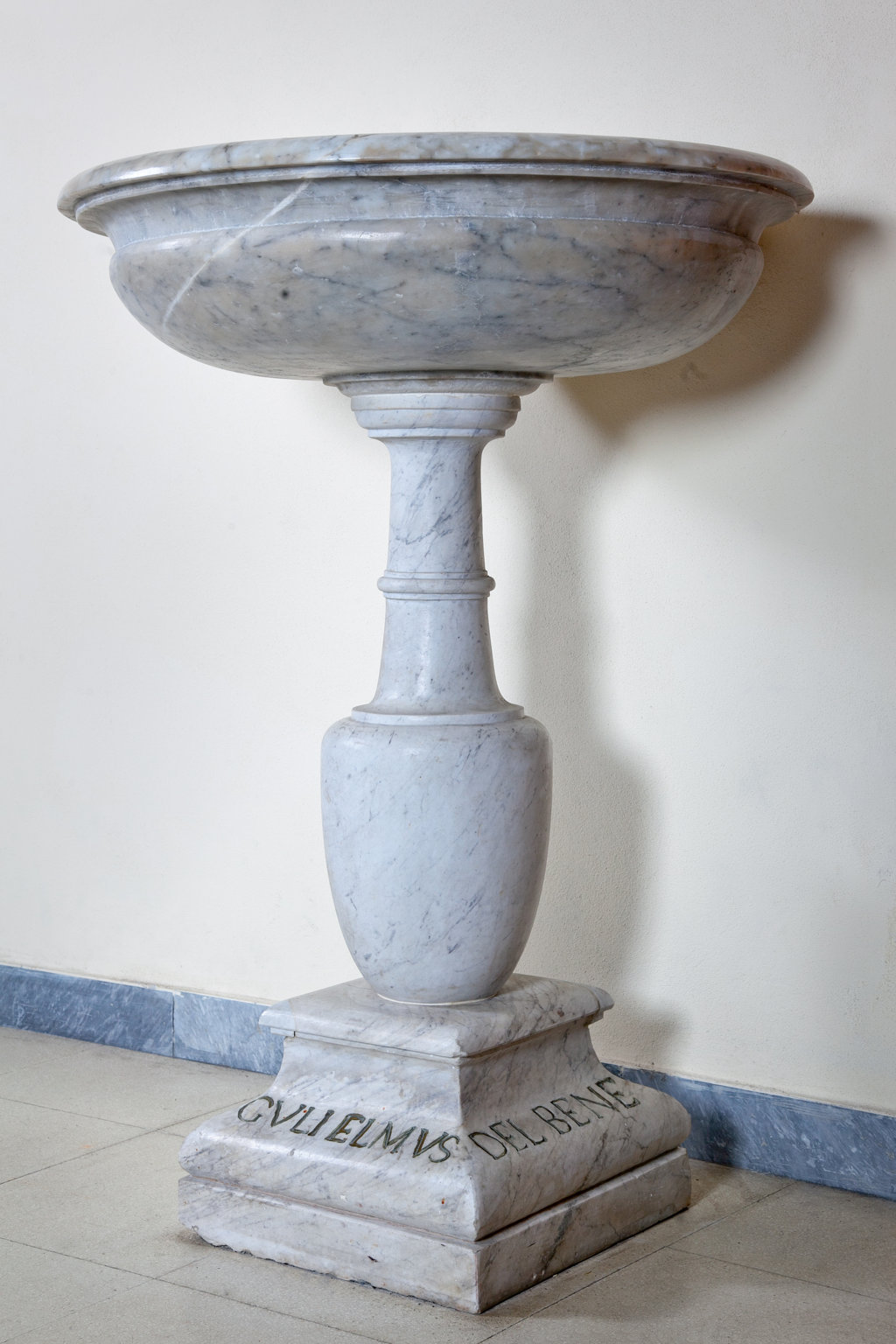
Della prima metà del ‘600 è il confessionale in legno, dono dell’ing. Walter Surbone. Merita attenzione anche l’antica acquasantiera in marmo, sulla destra entrando dal portone centrale. Di artisti contemporanei sono le formelle in gesso bronzato della Via Crucis (scultore C. Puzzolo); il disegno sulla facciata e il quadro sul fonte battesimale (F. Graziani); la recinzione del fonte battesimale in ferro battuto (R. Stellati) e la cupoletta in rame scolpito (Decembrini); le vetrate. Le due cappelle laterali, precedentemente chiuse e quindi inutilizzabili durante le celebrazioni, sono state aperte ad arco sul lato della navata centrale con l'effetto di un ampliamento dello spazio fruibile dai fedeli (in una cappella si trova l'immagine della Madonna di Loreto, dono della sezione di Cecina dell'Areonautica Militare; nell'altra la statua del Sacro Cuore).
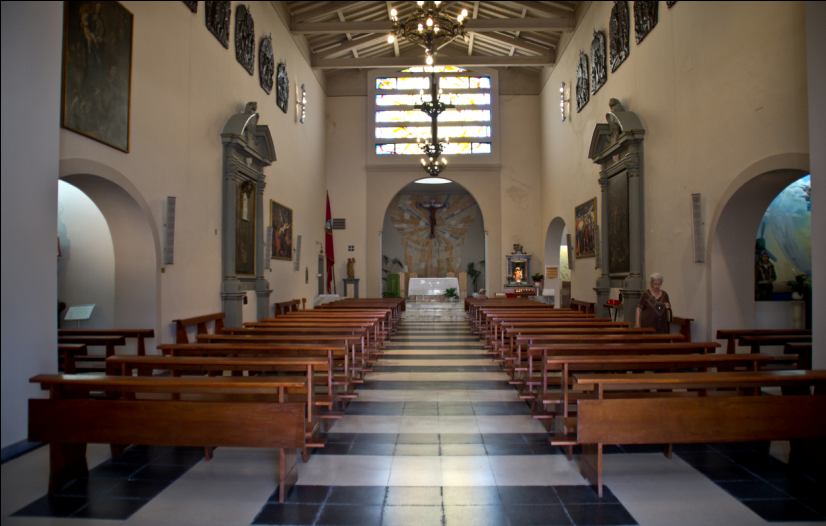
Nel 2014 si sono resi necessari nuovi lavori di restauro alla copertura ed all'interno della chiesa. Sono raggruppate le formelle della Via Crucis e si sono collocati i dipinti di maggior valore all'interno della navata centrale. Le due cappelle laterali, precedentemente chiuse e quindi inutilizzabili durante le celebrazioni, sono state aperte ad arco sul lato della navata centrale con l'effetto di un ampliamento dello spazio fruibile dai fedeli. Su suggerimento della Soprintendenza di Pisa è stato realizzato l'arco sull'altare maggiore e sull'accesso alla cappella del Santissimo Sacramento; si è proceduto infine alla tinteggiatura completa dell'interno. Nella navata centrale sono state collocate due riproduzioni su tela raffiguranti la vocazione e il martirio di Sant'Andrea, opere seicentesche del volterrano Giuseppe Arrighi (gli originali sono nella chiesa di S.Andrea del Seminario vescovili di Volterra).
Possiamo dire che la parrocchia di Marina, nata nel 1771, è la più antica della città. È del 1852 la costruzione della Chiesa dei Santi Giuseppe e Leopoldo, elevata al titolo di Duomo nel 1983. A seguito dell’espansione di Cecina, nel 1963, è stata eretta anche la parrocchia di S. Carlo Borromeo al Palazzaccio, smembrandone il territorio dal Duomo. In quella Parrocchia, presso la ferrovia, si trova la chiesetta, costruita nel 1959. In epoca moderna sono state costruite le due grandi chiese: quella di San Francesco (1995) in via Montenero nella parrocchia di Palazzaccio e quella della Santa Famiglia (2008) in via Ambrogi, nella parrocchia del Duomo.
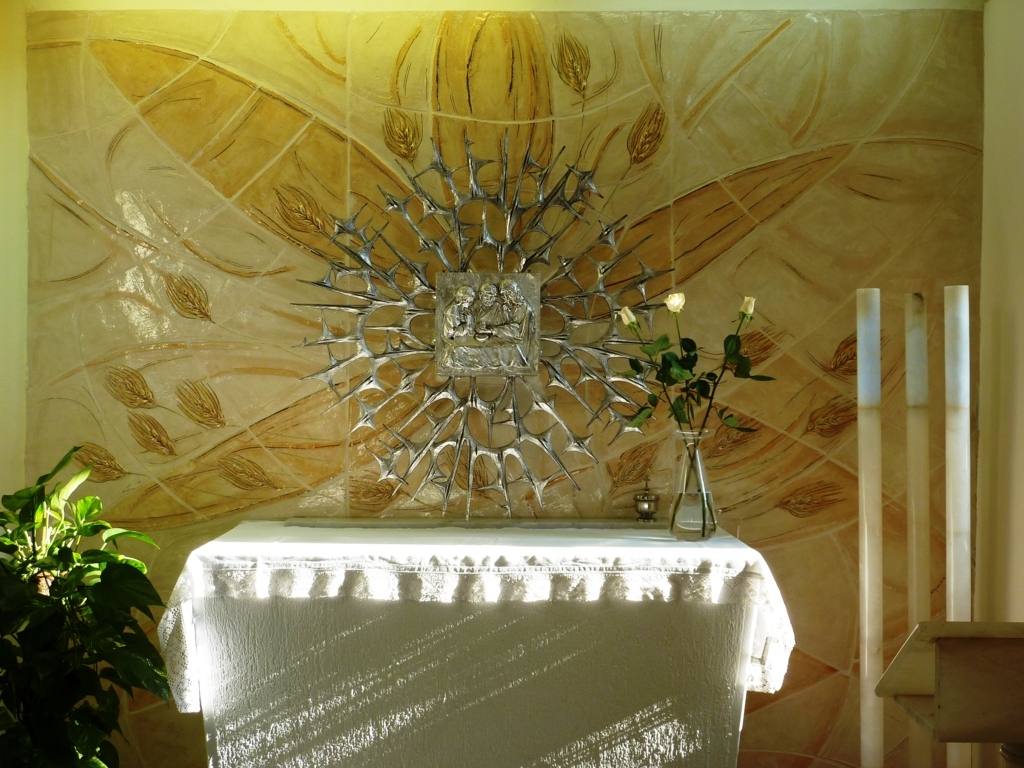
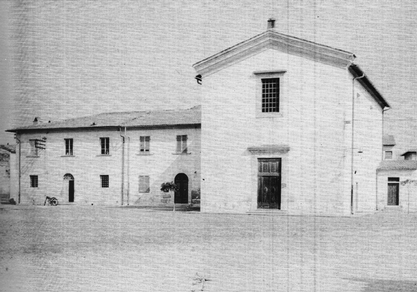
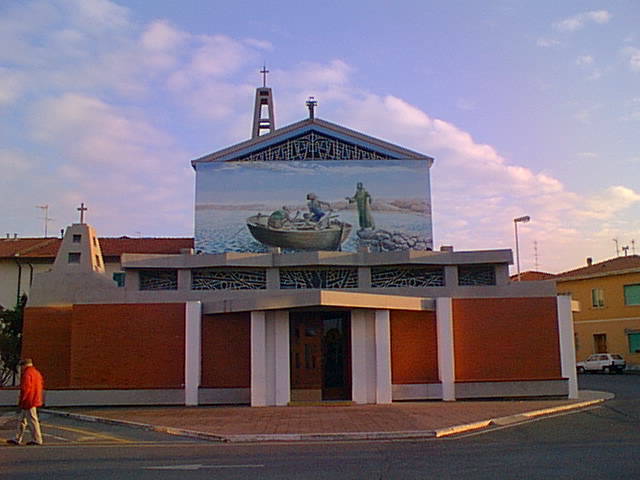
Information about the place and the Church of Cecina Marina

Here is some information about the place and the Church of Cecina Marina. Our territory has been known to history for a long time. Human settlements have been here since the 10th century BC, when Tuscany started having an important role in the ancient world. The Etruscan funerary sites in the area are evidence of the presence of human settlements along the road going from Populonia to Volterra, in a time when the economy of the area was mostly based on the exploitation of copper mines. In the course of the 1st century AD there was the diffusion of Roman civilization, mostly based on agriculture. The most important site that has been discovered so far is a Roman villa going back to the Imperial Age in the area of San Vincenzino in Ginori Street. In the late Imperial Age, the diffusion of large estates caused the abandonment and swamping of the whole coastal area.
That was the darkest time for the land around the mouth of the river Cecina, because marshes brought malaria, which made stable settlements impossible. The roads linking south to north were no longer along the coast but they were inland on the hills. In this time – it was the Middle Ages – the presence of the Benedictine Order with its monasteries in Bibbona, Casale Marittimo, Montescudaio and Monteverdi was of great importance for the area. When the Grand Duchy of Tuscany was established, the lands of the plain of Cecina were administered by the communities of Riparbella and Bibbona. In 1590 Grand Duke Ferdinand had a palace built – the Fitto – on the left bank of the river. He and Cosimus I started reclaiming the land. That allowed the establishment of settlements near the river whose main occupations were handicraft, metallurgical activities, growing cereals and cattle breeding in the estate of the Grand Duke. In 1737 the rule of the Hapsburgh-Lorena started and in the following year the estate of Cecina and the surrounding lands were given to Senator Carlo Ginori ( 1702-1757), who continued their reclamation and settled a small colony with the purpose of fishing coral at the mouth of the river.
 Between 1765 and 1790 the Grand Duchy of Tuscany was ruled by Peter Leopold, who carried out a policy of intervention on the territory, showing a particular interest in the coastal area.In 1771 Alessandro Galletti, Bishop of Volterra, took note of the growing population around the mouth of the river and established the Parish of Cecina Marina with the title of St Joseph, taking a part of the land from the Parish of Bibbona. In 1785 the building of the church was started on the design of Engineer Caluri. It was rectangular and had linear smooth external walls, the surface of which was decorated with neoclassical motifs. Then there was a square bell-tower- no longer in existance - and the curate’s house, built in 1787, which had more or less the same shape as today’s.The Bishop of Volterra, Luigi Bonamici, delegated don Vincenzo Noccioli to bless the church on 19th March 1789.
Between 1765 and 1790 the Grand Duchy of Tuscany was ruled by Peter Leopold, who carried out a policy of intervention on the territory, showing a particular interest in the coastal area.In 1771 Alessandro Galletti, Bishop of Volterra, took note of the growing population around the mouth of the river and established the Parish of Cecina Marina with the title of St Joseph, taking a part of the land from the Parish of Bibbona. In 1785 the building of the church was started on the design of Engineer Caluri. It was rectangular and had linear smooth external walls, the surface of which was decorated with neoclassical motifs. Then there was a square bell-tower- no longer in existance - and the curate’s house, built in 1787, which had more or less the same shape as today’s.The Bishop of Volterra, Luigi Bonamici, delegated don Vincenzo Noccioli to bless the church on 19th March 1789.
 In those years the church was endowed with some paintings. As usually happened in the past, a work of art marked an era, a historical moment and a place. The three paintings in the church of Cecina Marina also tell us about the time and place they were carried out. The two first priests, a curate and a chapelain, who were entrusted with the care of the parish, belonged to the Order of the Minimum Friars, founded by St Francis of Paul (1416-1507), a hermit who was a devotee of St Francis of Assisi and was renown for his great healing ability all over Europe. Owing to the presence of the Minimum Friars in Marina, the paintings represent saints dear to them. In one you can see the Immaculate Conception with Baby Jesus and St Francis of Paul, in another one St Joseph, patron saint of the parish, and St Pascal Baylon (1540-1592), also belonging to the Order, with a square space with an image of Our Lady in it, and then in a third one the Virgin Mary with St Dominicus and the saints of the Franciscan family, Francis, Claire and Antony of Padua.
In those years the church was endowed with some paintings. As usually happened in the past, a work of art marked an era, a historical moment and a place. The three paintings in the church of Cecina Marina also tell us about the time and place they were carried out. The two first priests, a curate and a chapelain, who were entrusted with the care of the parish, belonged to the Order of the Minimum Friars, founded by St Francis of Paul (1416-1507), a hermit who was a devotee of St Francis of Assisi and was renown for his great healing ability all over Europe. Owing to the presence of the Minimum Friars in Marina, the paintings represent saints dear to them. In one you can see the Immaculate Conception with Baby Jesus and St Francis of Paul, in another one St Joseph, patron saint of the parish, and St Pascal Baylon (1540-1592), also belonging to the Order, with a square space with an image of Our Lady in it, and then in a third one the Virgin Mary with St Dominicus and the saints of the Franciscan family, Francis, Claire and Antony of Padua.
 There is also a bas-relief showing the Virgin of the Graces, made of varnished plaster by an unkown author perhaps in the 16th century, which is of particular interest and devotion for the local people. There are some popular traditional stories about this “Madonnina”, as it is commonly called.The first tells that the “Fosso della Madonna”, a stream that flows into the sea south of Marina, got its name from the fact that the bas-relief was found there by some fishermen. A different version tells that it was found after a fierce south-west storm. This popular version is rather unlikely, because a plaster object cannot stay undamaged in the water. Another story ascribes the find of the image to a shipwrecked vessel loaded with various sacred things which, owing to a storm, ran to ground in front of Marina. An unbroken case, which contained the image of the Virgin, ended up on the shore and was given to the priest. Among the findings of the same shipwrecked vessel there was also, according to a popular tradition, a small bell, similar to those used on ships. It has recently been given to the Parish by the Chiavacci family and it has been placed on the bell tower. The popular tales are a sign of affection and devotion and often convey a part of the truth. Actually in the course of time shipwrecks were frequent in the sea in front of Marina . For example in 1878 there was the shipwreck of the Australia, a transatlantic liner , which ran to ground in the shallows of Vada. She was loaded, among other things, with objects for the cult.
There is also a bas-relief showing the Virgin of the Graces, made of varnished plaster by an unkown author perhaps in the 16th century, which is of particular interest and devotion for the local people. There are some popular traditional stories about this “Madonnina”, as it is commonly called.The first tells that the “Fosso della Madonna”, a stream that flows into the sea south of Marina, got its name from the fact that the bas-relief was found there by some fishermen. A different version tells that it was found after a fierce south-west storm. This popular version is rather unlikely, because a plaster object cannot stay undamaged in the water. Another story ascribes the find of the image to a shipwrecked vessel loaded with various sacred things which, owing to a storm, ran to ground in front of Marina. An unbroken case, which contained the image of the Virgin, ended up on the shore and was given to the priest. Among the findings of the same shipwrecked vessel there was also, according to a popular tradition, a small bell, similar to those used on ships. It has recently been given to the Parish by the Chiavacci family and it has been placed on the bell tower. The popular tales are a sign of affection and devotion and often convey a part of the truth. Actually in the course of time shipwrecks were frequent in the sea in front of Marina . For example in 1878 there was the shipwreck of the Australia, a transatlantic liner , which ran to ground in the shallows of Vada. She was loaded, among other things, with objects for the cult.
 The image shows an adoring mother : it is the Mother who adores God’s Son. The Virgin’s sweet eyes and the Son’s little hands reaching for His Mother in order to caress her make the picture worthy of admiration and it compels us to pray. The Virgin is dressed in red, as in many ancient paintings. Red is the symbol of divinity and hints at Mary’s title of Mother of God. There are stars on her light blue mantle – light blue has become the typical Marian colour. Mary is invoked as the “Star of the Morning”. In what is perhaps the earliest picture of Mary, in the catacombs of Priscilla in Rome, a prophet pointing at a star appears together with Mary. It is a reference to the oracle of Balaam in the Book of the Numbers: “ a star rises from Jacob and a scepter from Israel”(Nm 24,17). The tradition that sees Mary as the Star can be summed up with John Paul II’s words: “ Mary will be, for the Christians of the third millennium, the Star that leads their steps safely towards the Lord”. In this coastal area of the Church of Volterra it is particularly suggestive to address to Mary as “ the Star of the Sea”, as St Bernard does in his beautiful prayer: “ In danger, trouble and doubt think about Mary, invoke Mary”.
The image shows an adoring mother : it is the Mother who adores God’s Son. The Virgin’s sweet eyes and the Son’s little hands reaching for His Mother in order to caress her make the picture worthy of admiration and it compels us to pray. The Virgin is dressed in red, as in many ancient paintings. Red is the symbol of divinity and hints at Mary’s title of Mother of God. There are stars on her light blue mantle – light blue has become the typical Marian colour. Mary is invoked as the “Star of the Morning”. In what is perhaps the earliest picture of Mary, in the catacombs of Priscilla in Rome, a prophet pointing at a star appears together with Mary. It is a reference to the oracle of Balaam in the Book of the Numbers: “ a star rises from Jacob and a scepter from Israel”(Nm 24,17). The tradition that sees Mary as the Star can be summed up with John Paul II’s words: “ Mary will be, for the Christians of the third millennium, the Star that leads their steps safely towards the Lord”. In this coastal area of the Church of Volterra it is particularly suggestive to address to Mary as “ the Star of the Sea”, as St Bernard does in his beautiful prayer: “ In danger, trouble and doubt think about Mary, invoke Mary”.
In the course of time the people of Marina have given her different but justified names: Virgin of the Graces, Virgin of the Water and Little Virgin of the Sea. After a new urban settlement developed along Aurelia road, the present town of Cecina, in 1855 a new big church - nowadays cathedral - was built and the little church of Marina became a mere chaplaincy. The title of St Joseph passed to the new church. After World War II, however, when tourism started, the coastal area developed further and in 1955 the church of Marina was raised to parish again and dedicated to St Andrew Apostle.
 It was soon necessary to enlarge it, so its length was encreased on the side of the presbitery as well as in the front – the lengthening on the square is quite visible because the roof of the old church is on a different level – and its internal structure changed owing to the liturgical reform. The works were carried out in 1971. The bell tower was also changed: the trabeation supporting the bells was anchored to the old structure of the tower of 1775.
It was soon necessary to enlarge it, so its length was encreased on the side of the presbitery as well as in the front – the lengthening on the square is quite visible because the roof of the old church is on a different level – and its internal structure changed owing to the liturgical reform. The works were carried out in 1971. The bell tower was also changed: the trabeation supporting the bells was anchored to the old structure of the tower of 1775.
 The wooden confessional, a gift from Engineer Surbone, goes back to the first half of the 17th century. The ancient marble holy water stoup, placed on the right of the front door is also noteworthy. The bronzed chalk panels of the Via Crucis are by a contemporary artist, Sculptor C. Puzzolo, the picture in the front and the one above the font are by F.Graziani, the wrought iron fence around the font is by R. Stellati and the little dome in carved copper is by Decembrini. The stained glass windows are also modern. One of the two side chapels at the bottom of the church is used for confession and the other is dedicated to the Vergin of Loreto. The statue you can see there is a gift from the Cecina division of the Air Force. The Parish of Marina, founded in 1771, can be said to be the oldest in the town. The church of St Joseph and St Leopold was built in 1852 and raised to the title of cathedral in 1983. As a consequence of the expansion of Cecina, in1963 the Parish of St Charles Borromeo was built in Palazzaccio, taking its territory from that of the cathedral. In that parish, near the railway, there is a small church built in 1959. Two big churches were built later on, one in 1955 dedicated to St Francis in Montenero Street in the parish of Palazzaccio and the other in 2008 dedicated to the Saint Family in Ambrogi Street in the parish of the cathedral.
The wooden confessional, a gift from Engineer Surbone, goes back to the first half of the 17th century. The ancient marble holy water stoup, placed on the right of the front door is also noteworthy. The bronzed chalk panels of the Via Crucis are by a contemporary artist, Sculptor C. Puzzolo, the picture in the front and the one above the font are by F.Graziani, the wrought iron fence around the font is by R. Stellati and the little dome in carved copper is by Decembrini. The stained glass windows are also modern. One of the two side chapels at the bottom of the church is used for confession and the other is dedicated to the Vergin of Loreto. The statue you can see there is a gift from the Cecina division of the Air Force. The Parish of Marina, founded in 1771, can be said to be the oldest in the town. The church of St Joseph and St Leopold was built in 1852 and raised to the title of cathedral in 1983. As a consequence of the expansion of Cecina, in1963 the Parish of St Charles Borromeo was built in Palazzaccio, taking its territory from that of the cathedral. In that parish, near the railway, there is a small church built in 1959. Two big churches were built later on, one in 1955 dedicated to St Francis in Montenero Street in the parish of Palazzaccio and the other in 2008 dedicated to the Saint Family in Ambrogi Street in the parish of the cathedral.



